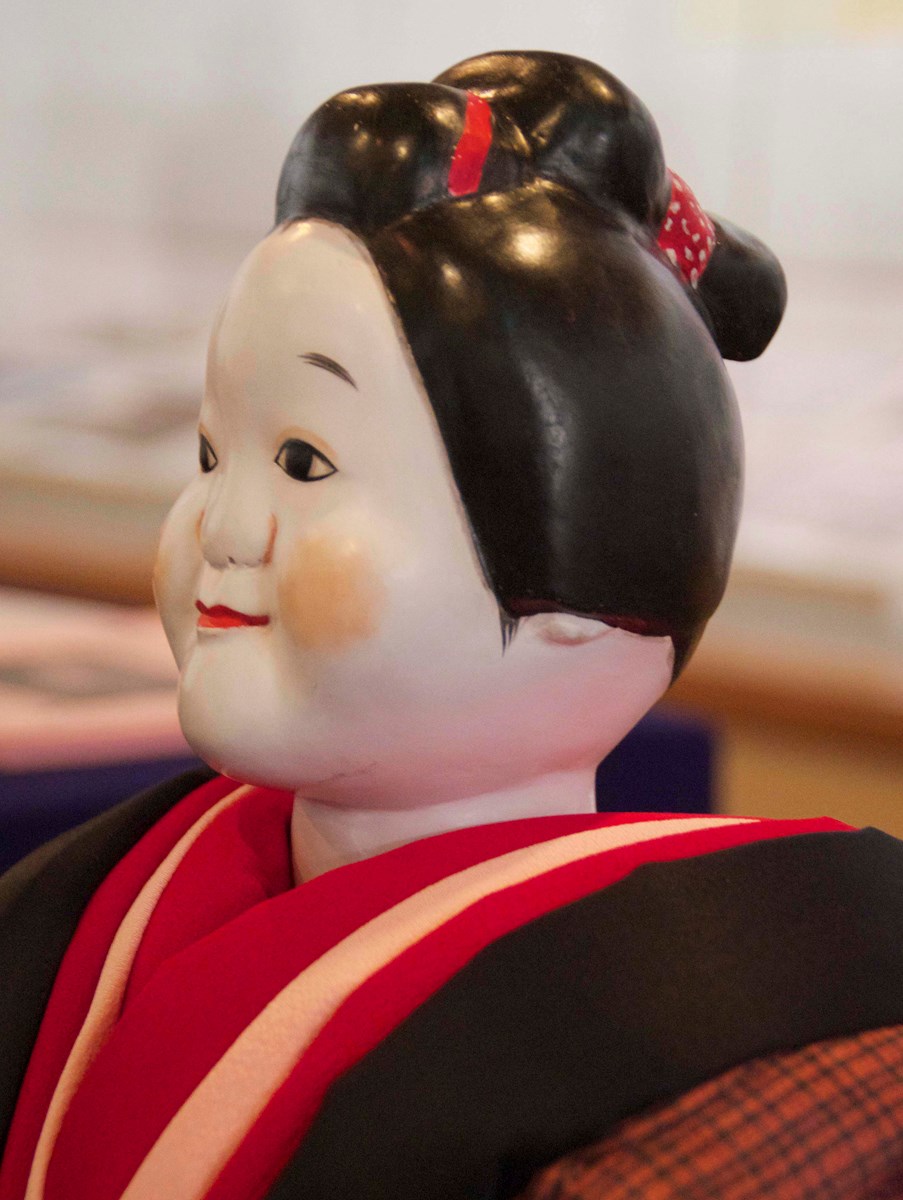Osaka, Japan —The gorgeous front cloth shows green pines on a gold background.
It rises to reveal a bucolic scene that might have been lifted straight from a traditional woodblock print. Multiple characters rhythmically plant rice, while to one side a figure swathed in black chants the performers’ thanks to the author of the play and introduces the narrator and the player of a three-stringed shamisen [Japanese] lute, who kneel together on a side stage.
The narrator begins to introduce the scene and its characters, while the shamisen player heightens the drama with plangent notes from the peculiarly deep-toned version of the instrument preferred in this type of theatre.
The bloody tragedy of The Vendetta by Two Sisters is about to unfold, based on a shocking true story of 1717. Amidst staging and costumes of an extravagance to rival any kabuki performance, the surprise is that the characters are puppets. For this is the National Bunraku Theatre in Osaka, the home of bunraku puppet theatre.
Bunraku draws its name from one particularly successful mid-19th century troupe, but had its golden age during the 17th century when it became popular entertainment for the growing urban commoner class. At that time Chikamatsu Monzaemon, bunraku’s Shakespeare, produced sweeping historical dramas and tragedies such as The Love Suicides at Sonezaki, also based on a notorious true story, in which a doomed love affair between a soya shop clerk and a high-class courtesan ended in a double stabbing.
The principal characters in the drama are about three-quarters the size of a human and are operated by three men each, mostly swathed and hooded in black, the colour of invisibility, although the gaudy costumes and painted faces of the puppets already draw the eye. The senior operator, one hand up the back of the puppet to control its head and the other controlling the right arm, remains soberly dressed with his features visible, but these are kept more wooden than those of the puppet itself.
Some of these men have been designated living national treasures and their skill is in conveying emotion through the simplest means. The narrator produces all the voices, including falsetto for the women, and the shamisen can produce a powerful sadness, but the lead puppeteer completes the emotion with a subtle dip of the puppet’s head enough to bring a sympathetic tear to the eye.
In The Vendetta by Two Sisters, first performed in 1780, one girl witnesses the murder of her father by a samurai, finds her long-vanished sister in a Tokyo pleasure-quarter brothel and together they track down their father’s murderer and take his life in turn.
A single-earpiece audio guide for English-speakers provides a whispered translation and much background into Japanese culture of the time. Samurai were licensed to take the lives of recalcitrant commoners. Selling oneself to a brothel to provide money for one’s parents was thought to show filial piety. Vendetta was expected, and failure to carry it out could bring punishment. But when undertaken by women it was sufficiently sensational to ensure immortality in a puppet play.
For more information visit the Japan Arts Council website at ntj.jac.go.jp/english.html and click on “National Bunraku Theatre.” For information on travel in Japan visit the Japan National Tourism Organization at jnto.go.jp. For more travel stories visit culturelocker.com.



